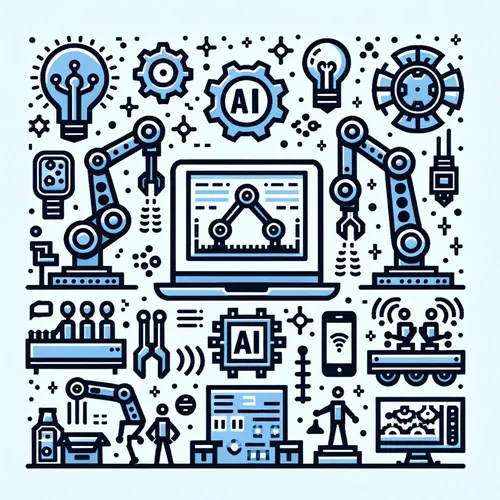Robots Dominate Factories: AI Sparks Smarter Manufacturing Frenzy
- Author
- Quiet. Please
- Published
- Wed 27 Aug 2025
- Episode Link
- https://www.spreaker.com/episode/robots-dominate-factories-ai-sparks-smarter-manufacturing-frenzy--67527870
This is you Industrial Robotics Weekly: Manufacturing & AI Updates podcast.
Industrial robotics is transforming manufacturing and warehouse automation at a record pace this week, keeping productivity and efficiency at the center of industry progress. As of 2025, there are over 4.2 million industrial robots running worldwide, according to the International Federation of Robotics, marking a 10 percent rise from last year and setting new records for annual installations, particularly in Asian markets led by China. China alone now hosts more than half of all new robotic deployments, a testament to its commitment to automation and industrial growth.
AI integration stands out as the critical driver for smarter factories in 2025. Eighty-nine percent of manufacturers have active plans to embed artificial intelligence throughout their production networks, relying on its predictive power for maintenance and quality control. For instance, computer vision enabled by artificial intelligence is automating inspection to flag product defects almost instantly, slashing human error and downtime. Predictive analytics are reshaping maintenance, allowing for data-driven interventions that minimize costly interruptions and extend asset lifecycles.
Warehouse and process optimization benefit greatly from plug-and-produce automation systems, allowing manufacturers to quickly implement solutions like automated palletizers and material handling robots with minimal configuration. These turnkey systems are lowering barriers for smaller firms to adopt automation, leading to rapid return on investment, scalability, and resilience against market fluctuations.
A focus on human-cobot collaboration is making automation safer and more productive. Cobots equipped with advanced sensors and software now work directly alongside people, facilitating routine tasks while elevating safety and allowing human talent to contribute to more strategic initiatives. This trend is boosting both productivity metrics and worker satisfaction, as employees are freed from repetitive or hazardous duties.
Cost analysis brings encouraging news for manufacturers: technology investments in digital and automation solutions now comprise nearly a third of operating budgets, up from 23 percent in 2023. With proven ROI from cloud platforms, generative artificial intelligence, and advanced robotics, businesses are seeing faster time to market and higher bottom-line gains despite rising material and workforce costs.
Industry technical standards continue to evolve as adaptable robotic systems meet rigorous manufacturing specifications for precision and reliability in diverse sectors such as aerospace and electronics. Customizable solutions, like those offered by Gray Matter Robotics, are streamlining small-batch production and supporting agile responses to shifting consumer demands. As industrial robotics becomes the backbone of production, resilience and supply chain security reach new heights.
For practical takeaways, manufacturers can accelerate success by exploring plug-and-produce automation, investing in predictive analytics, and fostering human-robot partnerships for safer, more adaptive workplaces. Staying educated on the latest standards and technology best practices remains vital for leadership across the sector.
Looking to the future, expect robotics and artificial intelligence to drive even greater specialization, flexibility, and consolidation in manufacturing worldwide. Advanced connectivity and mobile robotics will shape the next decade, powering the industry towards sustainability and competitive strength.
Thank you for tuning in to Industrial Robotics Weekly. Come back next week for more on manufacturing innovation. This has been a Quiet Please production—check out Quiet Please Dot A I for more.
For more
